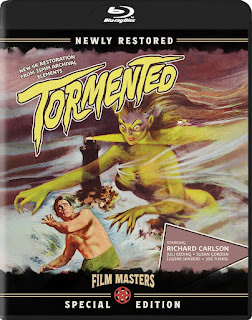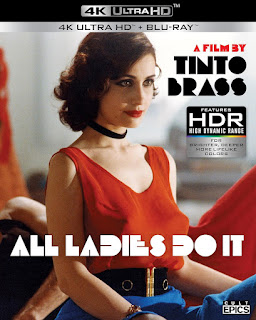Bandits of Orgosolo
The trouble with movies determined to make a political statement is they often lose their audience along the way. Film can be a terrifically persuasive media, but when entertainment is bogged by the weight of its arguments, you’re left with - at best - a heavy-handed message movie or - at worst – the worst sort of well-intentioned propaganda. But in his debut feature, Bandits of Orgosolo (1960), director Vittorio De Seta tackles the same issues as the original adherents of Italian neorealism and layers them beneath a Hitchcockian wrong man plot that never insults his audience’s intelligence or attention span.
A law-abiding Sardian shepherd, Michele, gets mixed up with a trio of poachers who kill a member of the carabinieri during their escape. Labeled guilty by association, Michele dodges his pursuers while enlisting the help of his younger brother to protect his sheep, their only source of income. Now facing the choice of debt, death or family humiliation, Michele’s choices become worse by the moment as he brutally pushes this flock toward a last-ditch effort at freedom.
Shot on location atop dizzying mounting peaks with cast with non-professional actual shepherds, De Seta’s film captures a genuine sense of place without ever relying on documentary techniques. His visual approach is simple but elegant, lingering on faces and places with equal determination. Minimal music and high-contrast black-and-white cinematography do most of the world-building, resulting in art that never feels artificial.
And the cast of unknowns here is a strength rather than a weakness. Bandits moves them like pieces on a chessboard, slowly increasing the tension until each is cornered by misfortune, betrayal or fate. Despite the fact that De Seta’s film circles a rather inevitable conclusion, you still never see it coming; the agenda never overshadows its plot, which is the real trick to getting your message across. And Bandits does it better than almost any film out there.
Released by Radiance in a 2000 copy limited-edition Blu-ray, the transfer is gorgeously grainy with a spot-on cinematic appearance taken from a new 4K restoration. Extras include a new interview with cinematographer Luciano Tovoli (one of the all-time greats), another with curator Ehsan Khoshbakht, trailer and collectible booklet. Don’t wait on this one!




Comments
Post a Comment